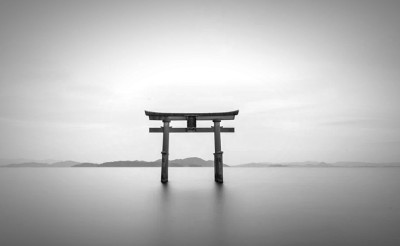UNESCO World Heritage Sites in Japan

The UNESCO World Heritage Sites are landmarks or areas that have been chosen by the United Nations Educational, Scientific and Cultural Organization for having cultural, historical, or scientific significance among others.
The basic criteria is that they are judged to contain "cultural and natural heritage around the world considered to be of outstanding value to humanity".
In Japan, there are 25 of these sites.
It is interesting to note that the Japanese government considers a site being accepted as a UNESCO World Heritage Site as great honor for the nation, so there is a very active campaign to continually get more sites reviewed and accepted.
In order of acceptance dates they are:-
- The Buddhist Monuments in the Horyu-ji Area in Nara prefecture
- Himeji-jo in Hyogo prefecture
- Yakushima in Kagoshima prefecture
- Shirakami-Sanchi in Aomori prefecture
- Ancient Kyoto in Kyoto prefecture
- Villages of Shirakawa-go in Gifu prefecture
- The Peace Memorial in Hiroshima prefecture
- Itsukushima Shinto Shrine in Hiroshima prefecture
- Ancient Nara in Nara prefecture
- Nikko Shrine in Tochigi prefecture
- Gusuku Sitesin Okinawa prefecture
- Kii Mountain Range Pilgrimage SItes in Mie, Nara and Wakayama prefectures
- Shiretoko National Park in Hokkaido prefecture
- Iwami Ginzan Silver Mine in Shimane prefecture
- Ogasawara Islands in Tokyo
- Hiraizumi Temples in Iwate prefecture
- Mount Fuji in Shizuoka and Yamanashi prefectures
- The Tomioka Silk Mill in Gunma prefecture
- Sites of the Iron and Steel, Shipbuilding and Coal Mining of the Industrial Revolution in Iwate, Shizuoka, Yamaguchi, Fukuoka, Kumamoto, Saga, Nagasaki and Kagoshima prefectures
- The National Museum of Western Art in Tokyo
- Okinoshima Island in Fukuoka prefecture
- Hidden Christian Sites in Nagasaki prefecture
- Mozu-Furuichi Mounded Tombs in Osaka prefecture
- Amami-Oshima Island group in Kagoshima and Okinawa prefecture
- Jomon Prehistoric Sites in Hokkaido, Aomori, Iwate and Akita prefectures
The first site was accepted by the UNESCO judges in 1993 and the latest one in 2021.
If you are interested in Japanese architecture, then the shrines in Nikko, and Himeji castle are standouts.
The intricacies of the woodwork and ancient Japanese carpentry techniques are on full display.

The most popular sites for tourists are ancient Kyoto and Nara.
These two cities are teeming with places to visit and wonderful photography opportunities.

For those of you interested in more adventurous nature hikes, then nothing beats the climb up Mount Fuji and the Yakushima hiking tours.
These are sometimes crowded and are not available all year.

For travelers to Japan, these sites are a good guide to places to visit to make your trip memorable.

